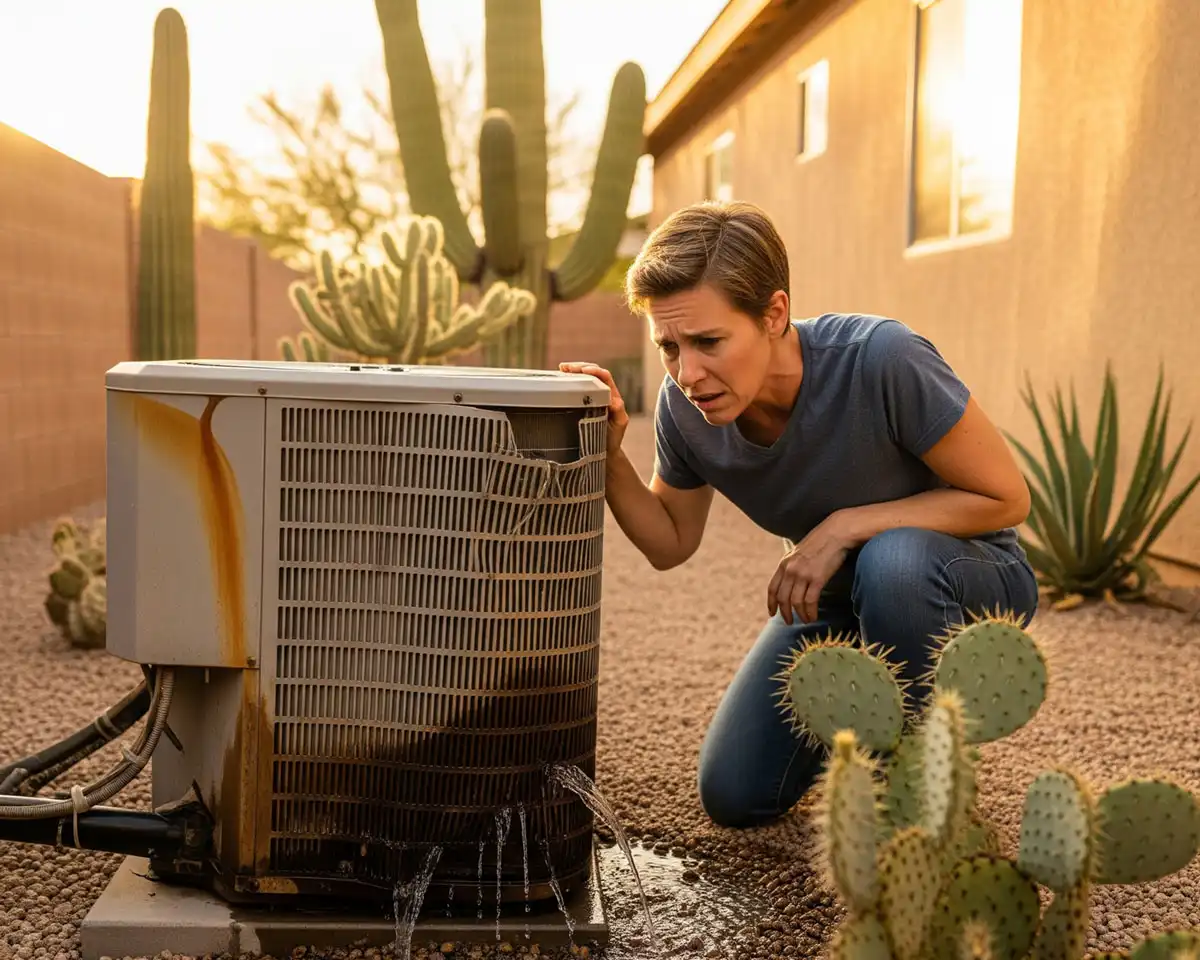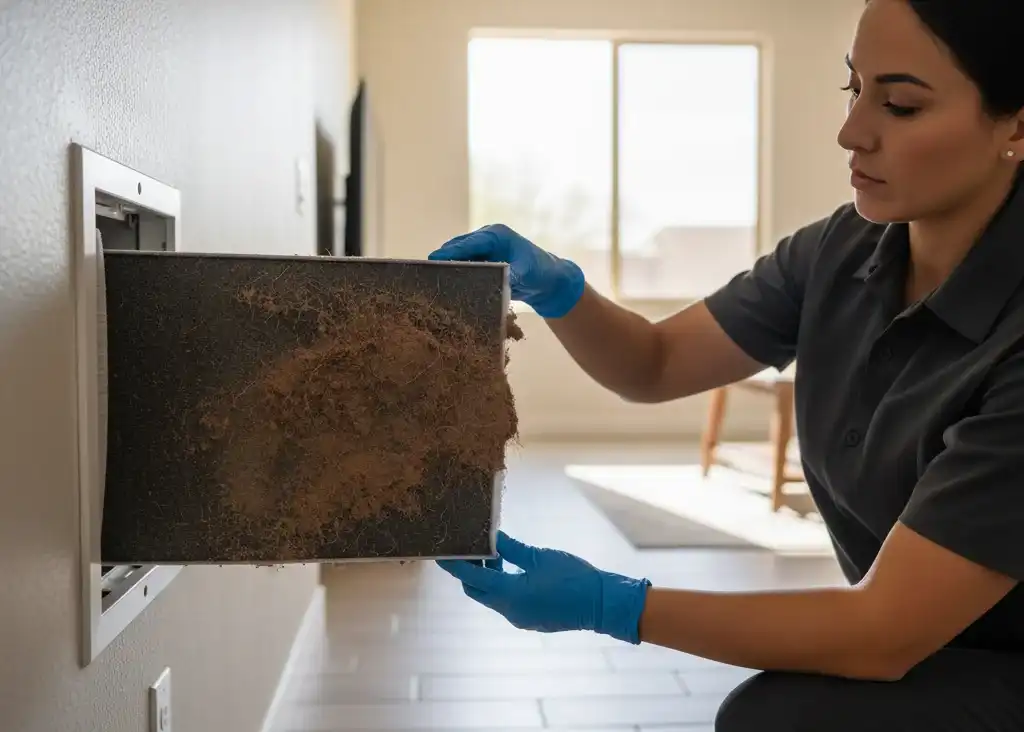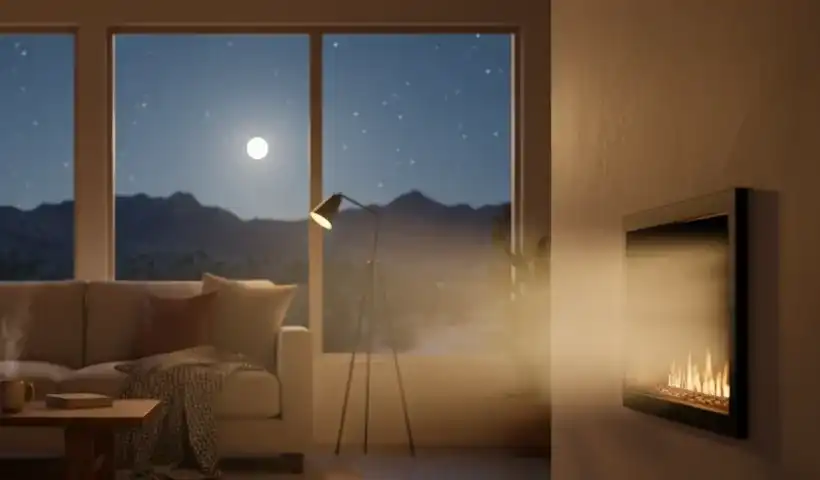Recognizing the signs your AC needs repair is critical in Mohave County, where air conditioning isn’t just a luxury—it’s essential. With July high temperatures consistently averaging 108°F to 109°F, a healthy AC is your first line of defense against the relentless desert heat (Source: Weather Spark).
What’s Inside This Guide:

When your system starts to falter, it’s easy to feel a sense of dread. But not every hiccup is a catastrophe. Understanding the difference between a simple fix and a serious problem can save you time, money, and stress. This guide will walk you through the most common warning signs for AC units in our demanding climate. We’ll cover what you can safely check yourself, explain what the symptoms mean, and clarify when it’s time to schedule a professional diagnostic visit with the expert team at Horizon Air during business hours.
Sign 1: Not Cooling? A Clear Sign Your AC Needs Repair
This is the most common complaint we hear: the system is running, but the air from the vents feels lukewarm, or it runs for hours without ever reaching the temperature on your thermostat. This points directly to a problem with heat transfer, a core part of our cooling services.
The most common causes include:
- A Clogged Air Filter: This is the #1 culprit. A blocked filter suffocates your system, preventing enough air from passing over the evaporator coils to get cooled. According to the Department of Energy, routinely replacing your filter can lower an AC’s energy consumption by 5% to 15%.
- A Dirty Evaporator Coil: Over time, the indoor coil can become coated in dust and grime, which acts like an insulator. This prevents the refrigerant inside from effectively absorbing your home’s heat.
- A Dirty Outdoor Condenser Coil: The outdoor unit’s job is to release all that collected heat into the air. If the coils and fins are caked with dust, dirt, and debris, the heat gets trapped, and the system can’t cool your home properly. ENERGY STAR lists cleaning and maintaining coils as a key professional maintenance task.
Sign 2: Puddles and Drips Around Your Indoor Unit
Noticing a puddle of water around your indoor air handler is a clear sign of a drainage problem. As your AC removes humidity from the air, it creates condensation that is supposed to flow safely outside through a drain line.
- Clogged Condensate Drain Line: It’s common for algae, sludge, and dust to form a clog in this line, causing water to back up and overflow into your home.
- Frozen Evaporator Coil: If airflow is severely restricted (usually by that same clogged filter), the moisture on the evaporator coil can freeze into a solid block of ice. When this ice eventually melts, it can overwhelm the drain pan and cause a significant leak.
What to do if you see ice: Per manufacturer guidance from experts like Carrier and Trane, you should immediately turn the thermostat’s Cool mode OFF, but leave the Fan set to ON. This circulates air across the ice and helps it melt safely. Once it has thawed, you should schedule a visit to diagnose the underlying cause.
Need Help Now?
If you’re dealing with any of these issues, don’t wait for a complete breakdown. Schedule a service call with our team.
Schedule ServiceSign 3: The AC Shuts Off and On Constantly (Short-Cycling)
Short-cycling is when your system runs for only a few minutes, shuts down, and then kicks back on again in a rapid, repeating cycle. This is a serious symptom that puts extreme wear and tear on the compressor, the heart of your AC system.
This is not a DIY fix and can be caused by several issues, including low refrigerant, an electrical control failure, or an oversized system. If you notice your AC short-cycling, it’s best to turn it off and schedule a professional AC repair diagnostic call.
Sign 4: A Sudden Spike in Your Utility Bill
Your monthly bill from UniSource or Mohave Electric is a great indicator of your AC’s health. If you see a sudden, unexplained jump in your electricity usage compared to the same month last year, your AC is likely the cause.
A high bill is a direct sign of efficiency loss. Your system is running longer and drawing more power to do the same job. This is often a lagging indicator of the problems mentioned above, like dirty coils or low refrigerant. It can also be a sign of leaky ductwork. According to ENERGY STAR, a typical home can lose 20% to 30% of the air that moves through the duct system to leaks, meaning you’re paying to cool your attic instead of your living room.
Sign 5: Strange Noises or Smells
You know the normal hum of your air conditioner. When new, alarming sounds appear, it’s your system telling you something is wrong.
- Buzzing: A loud electrical buzz often points to an issue with electrical components like the contactor or a failing motor. For safety, this requires a professional diagnosis.
- Rattling: This can be as simple as a loose panel or debris in the outdoor unit, but it can also indicate a failing motor or compressor.
- Screeching: A high-pitched squeal or screech is an urgent warning sign. It often indicates failing motor bearings or, in a worst-case scenario, dangerously high pressure inside your compressor. If you hear this, shut the system off immediately and call for a visit.
Your Action Plan: Responding to Signs Your AC Needs Repair
Your DIY Pre-Checklist:
Before making a call, there are a few simple things you can safely check yourself.
- Check your air filter. Is it visibly gray and clogged?
- Check your thermostat. Are the settings correct and are the batteries fresh?
- Check the outdoor unit. Is it blocked by debris, weeds, or bushes?
- Check your circuit breaker. Has the breaker for the AC or Air Handler tripped?
When to Schedule a Professional Visit:
If you’ve run through the DIY list and the problem persists, or if you notice any of these more serious symptoms, it’s time to call a professional for an AC maintenance and repair visit:
- The system is short-cycling.
- You hear loud grinding, squealing, or metallic banging noises.
- The unit repeatedly trips the circuit breaker.
- You see ice on the coils. (Perform the “fan on, cool off” step first, then call).
Common Questions About AC Problems
Why is my AC not cooling or blowing warm air?
This is usually caused by restricted airflow or a problem with heat transfer. The most common culprits are a clogged air filter that’s choking the system, or dirty coils on either your indoor or outdoor unit that can’t effectively absorb or release heat.
What does it mean if my AC is leaking water?
A water leak from your indoor unit typically points to a clogged condensate drain line, which prevents moisture from draining properly. It can also be caused by a frozen evaporator coil that is now melting and has overwhelmed the drain pan.
Why does my AC turn on and off so frequently?
This is called short-cycling and it’s a serious issue. It can be caused by several problems, including low refrigerant, an electrical issue, or even an AC unit that’s too large for your home. It’s a clear sign that you should schedule a professional diagnostic visit.
Don’t Wait for a Complete Breakdown
An air conditioner in Mohave County works harder than almost anywhere else in the country. Paying attention to these signs your AC needs repair can help you catch small problems before they become major, costly breakdowns. If you’re experiencing any of these issues, schedule a diagnostic visit with the Horizon Air team today. We’re here to help.
Schedule Your Appointment




